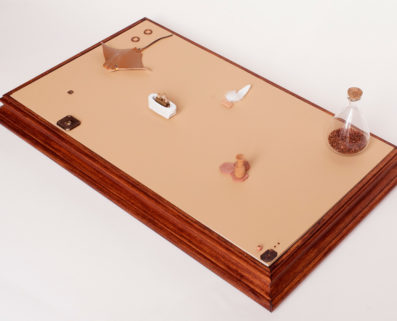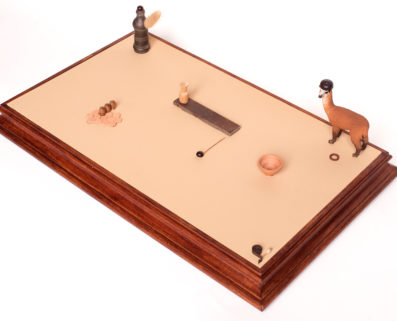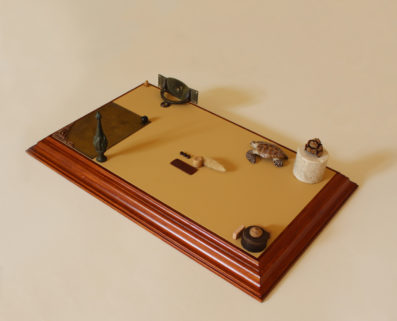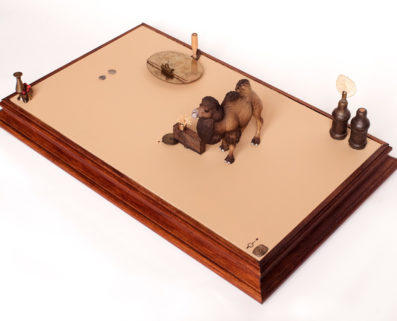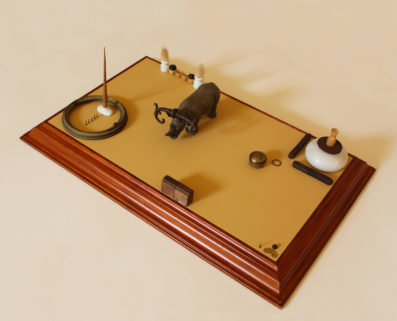Generally speaking, Dioramas represent scaled existing landscapes, the ones I’m referring to could not be found in reality because they all have an abstract referent: my memory. These ‘Landscapes of Memory’ are the stage on which unsustainable memories are faced: from deep sorrows to very pure emotions, it doesn’t matter what the content is, they are memories which prevent the mind to be free and the time to smoothly flows, creating an impasse. This incites a fight, a transformation: the translation of intolerable memories into cryptographic elements, readable as hieroglyphs, with their legend residing in the position, material and color of the objects on stage. If vain is any effort to remember how to forget (or forget how to remember), it is not absurd aiming to make this remembrance more difficult, creating deliberately noises and overlap in the materials that nourish the memory. Dioramas have been prepared in such a way so that from one moment to another, the gaze could encounter always different perspectives: a jumble of obstacles that help the thoughts to be lost in the reconstruction.
The animal, always present, is the innocent witness of all the attempts to forget, besides it doesn’t stratify the time (like Man) and it’s free from the time’s trap and yoke.
Through the elements composition takes place the translation of the recollections language into something different from a linguistic narrative: an objectified codex of what is by definition impalpable, the memory.
Through the drawing (made a posteriori) a cartographic configuration of some of the main mnemonic passages is expressed.
Any interpretation of the diorama, however, leaves dissatisfied, if there is a message is the one that could be captured by feelings and through.





